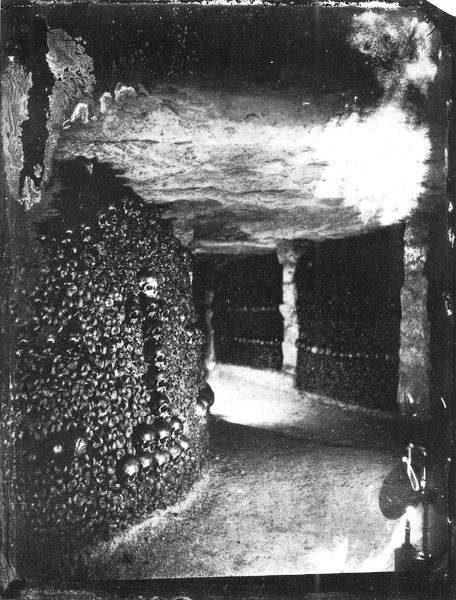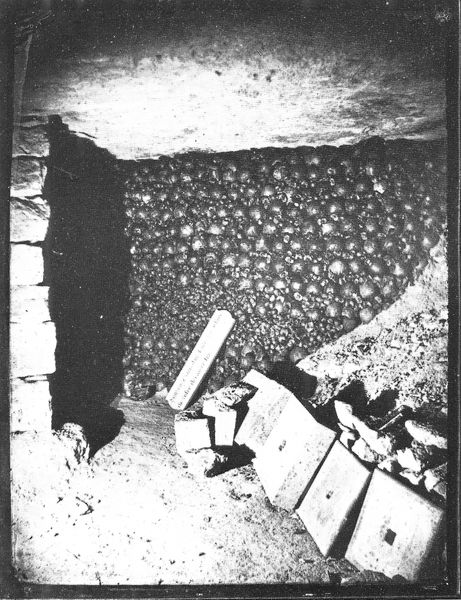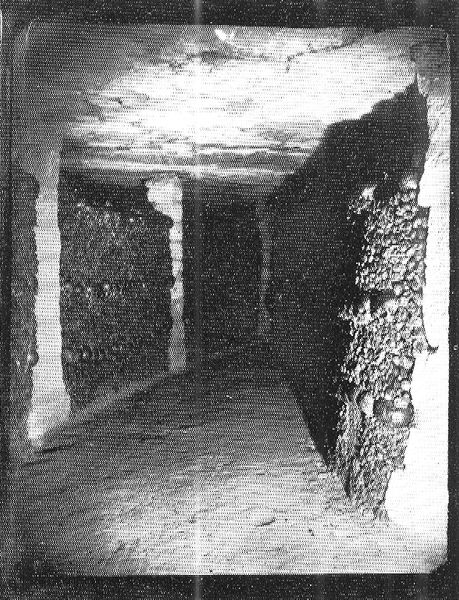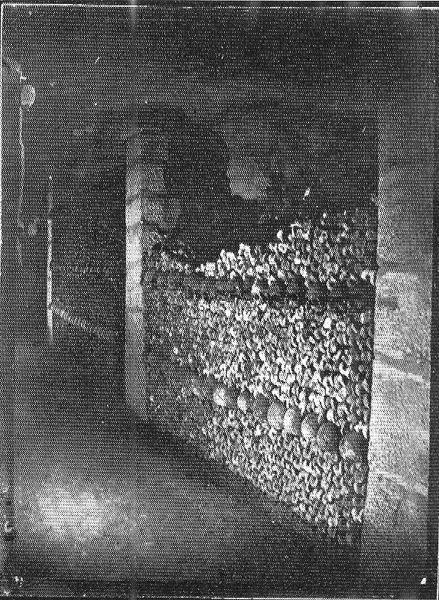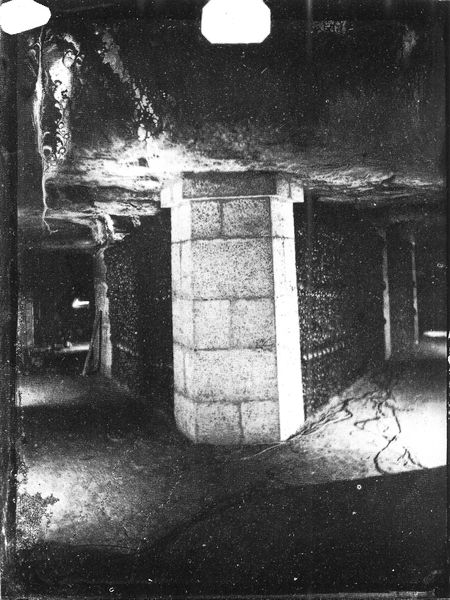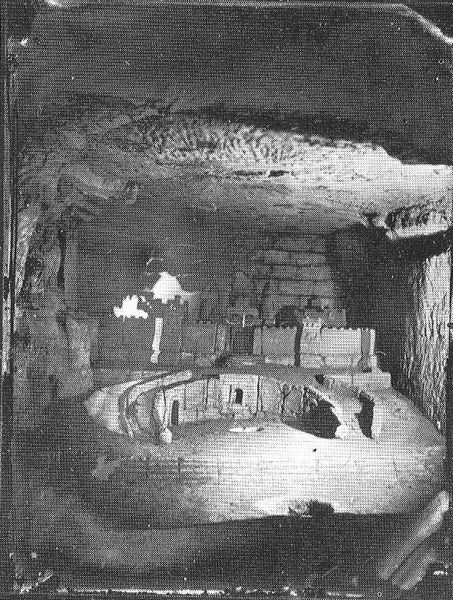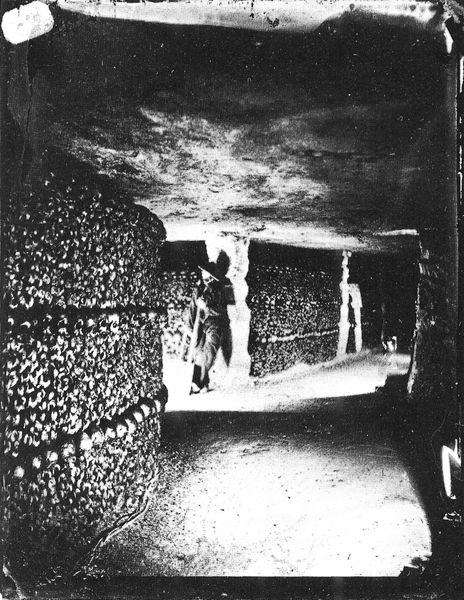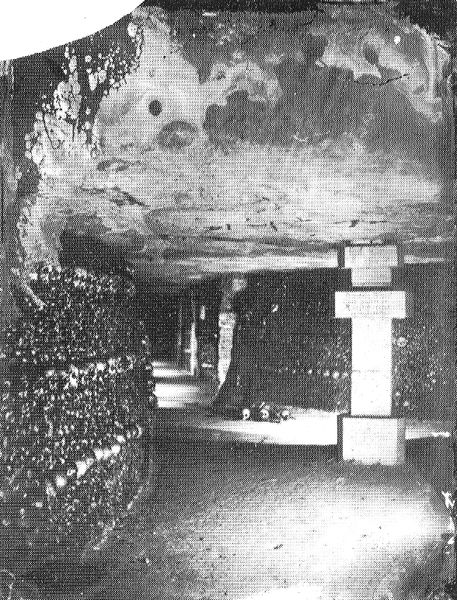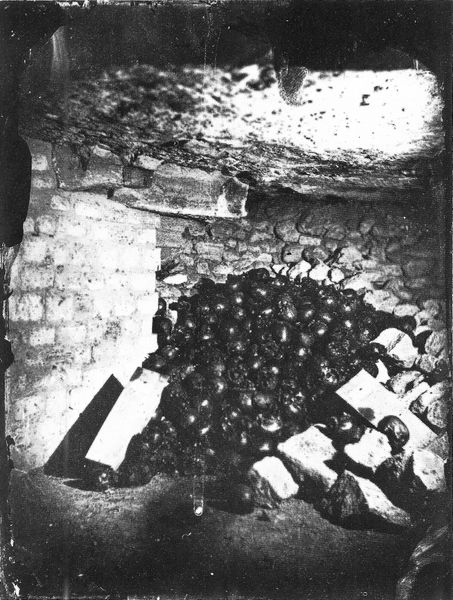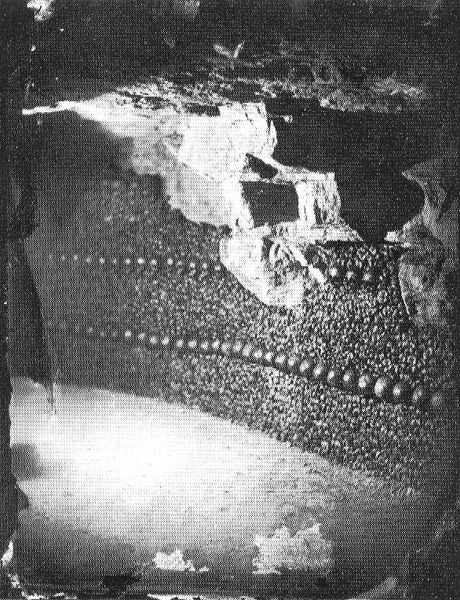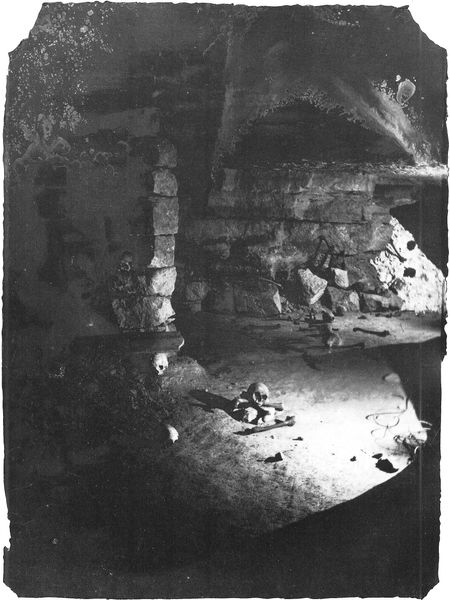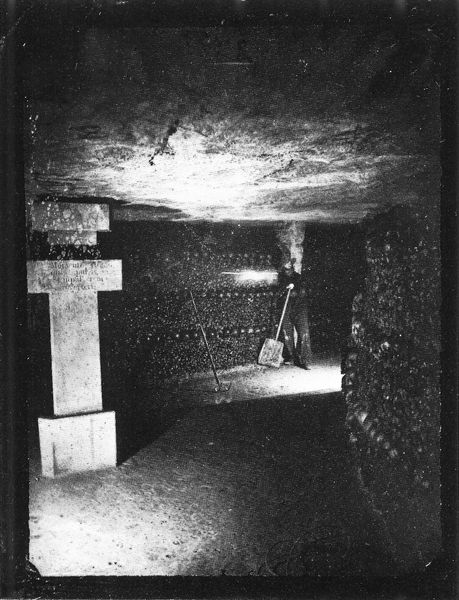
Copyright: Public domain
Editor: So, this is Felix Nadar's "Catacombes de Paris" from 1861, a gelatin silver print. It’s…well, it's a wall of skulls and bones. The sheer density of the remains is unsettling. What do you see in this photograph? Curator: I see layers, both literally and figuratively. The physical layers of skulls echo layers of time, layers of history, and perhaps, most profoundly, layers of memory. Notice how Nadar, a master of light, uses it here not to illuminate, but almost to conceal. Doesn't this suggest something about how we, as humans, deal with death, both individually and collectively? Editor: That’s interesting. It feels very different from how death was portrayed, say, in Renaissance art, which was often more symbolic or allegorical. This is…visceral. Curator: Precisely. Consider the shift. The photograph, in its supposed objectivity, becomes a powerful medium for confronting the reality of death. Doesn’t this stark, monochrome rendering of human remains strip away any romanticism? Does the lack of colour perhaps force us to confront the bare facts of mortality? Editor: Absolutely. The absence of color does lend a raw quality. It’s less about romanticising death and more about simply…showing it. I also see the stark contrast between the bones and the rocky walls; there is this claustrophobic environment. Curator: Yes, and those walls – are they protective, or are they trapping? Think about what catacombs traditionally represent: a liminal space, neither life nor death, but a transition. Consider that at the time this photo was taken, the Romantic movement was in full swing – did this fascination for this 'in-between-space' help create its audience? Editor: I hadn’t thought about it in terms of Romanticism, but that makes sense! I came into this thinking of it as morbid but it reflects an interest in emotional states and hidden aspects of life, right? Curator: Indeed. We find in the stark symbols not merely the morbid, but perhaps, a profound and lingering memento mori. Editor: I'll never look at a pile of bones the same way again. Thanks for broadening my view.
Comments
No comments
Be the first to comment and join the conversation on the ultimate creative platform.
